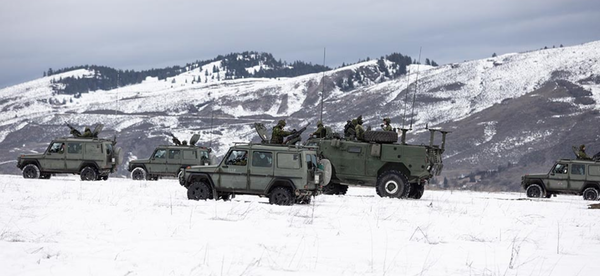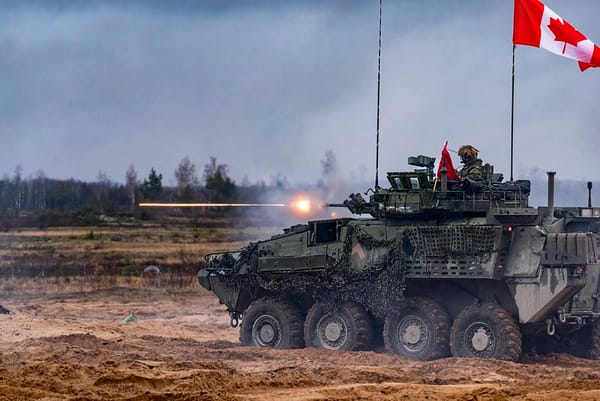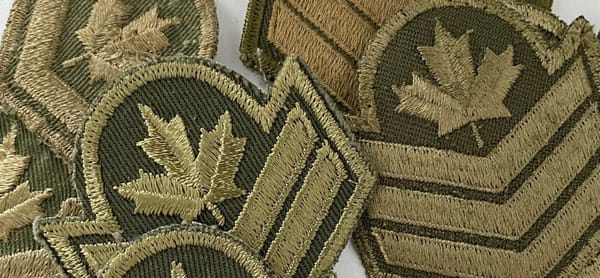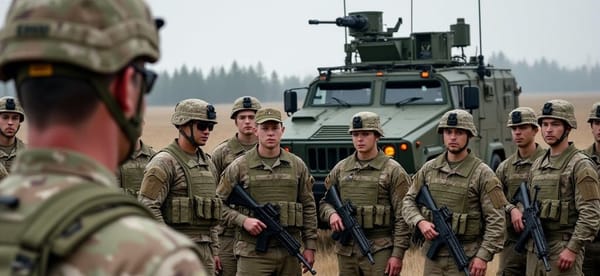Securing Canada’s Arctic: A Permanent Military and Economic Strategy
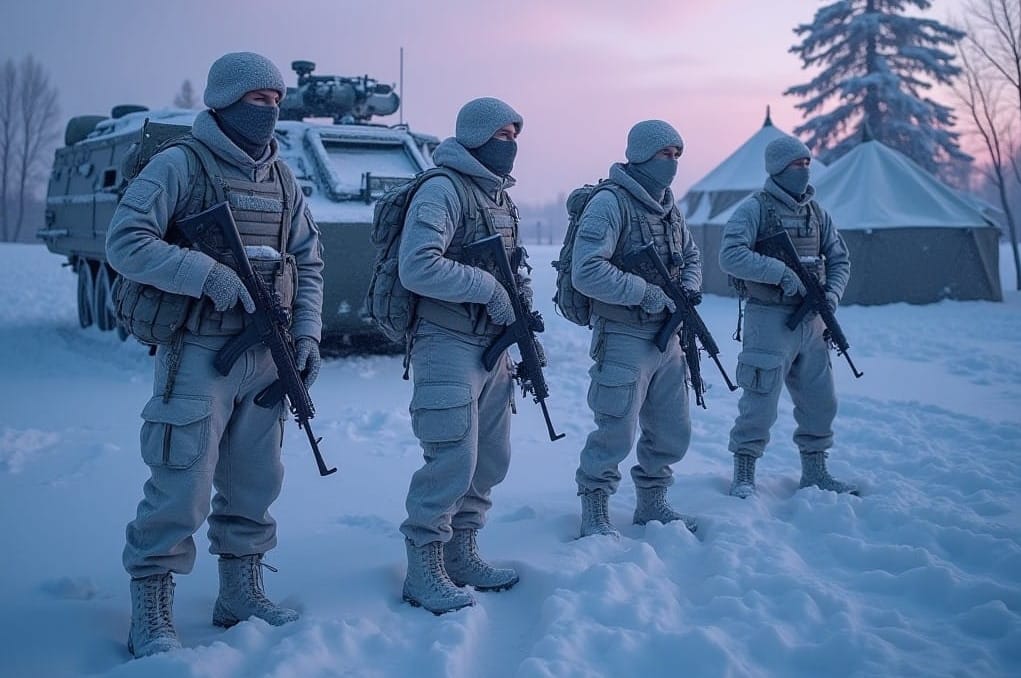
Canada’s Arctic is vast, resource-rich, and increasingly contested. While Canada claims sovereignty over this expansive northern region, the reality is that foreign powers—Russia, China, and even the U.S.—are rapidly expanding their Arctic presence. Russia maintains dozens of Arctic bases and airfields, China has declared itself a "near-Arctic state" with ambitions for polar shipping routes and resource extraction, and the U.S. continues to operate and invest in northern defense assets. Yet, Canada remains dangerously underprepared, with minimal military infrastructure, limited patrol capabilities, and an over-reliance on aging Cold War-era installations.
To truly secure the Arctic, Canada must move beyond symbolic sovereignty measures and establish a permanent, modernized military presence. This means building full-scale military bases (CFBs), reinforcing key surveillance sites (CFSs), and investing in transportation and energy infrastructure that will not only support defense operations but also unlock massive economic opportunities for northern communities. If the Hudson’s Bay Company could establish Fort Albany in 1683 and Churchill as a thriving Arctic trade hub in 1717, Canada has no excuse for inaction in 2025.
This article outlines a bold but practical strategy: a network of permanent CAF bases, improved Arctic logistics, and critical infrastructure investments that will both safeguard Canadian sovereignty and drive long-term economic growth.
Establishing a Network of Arctic Stations (CFS Revitalization)
Introduction to the Arctic Station Network
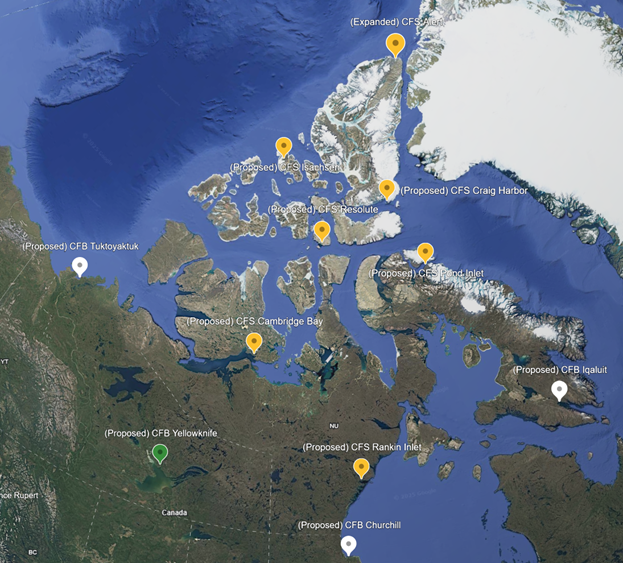
The Arctic has never been for the weak. It has tested the limits of human endurance, claimed the lives of explorers, and shaped only the hardiest into legends. The men of the HMS Erebus and HMS Terror did not fear the cold—they faced it with undaunted courage, pushing into the unknown in the name of discovery. Their sacrifice was not in vain. The Arctic is not a place to be surrendered—it is a place to be understood, mastered, and defended.
Today, the North is more than ice and isolation—it is a land of opportunity, wealth, and growing global competition. Beneath its frozen surface lie vast mineral reserves, untapped energy wealth, and a critical maritime gateway. Foreign powers understand its value; Russia, China, and even the United States are expanding their Arctic presence. Canada cannot afford to be a passive observer—we must act with the same boldness that defined our northern explorers and pioneers.
The solution is a revitalized network of Canadian Forces Stations (CFSs)—a series of strategically located surveillance, communications, and logistics hubs spread across the Arctic. These stations will serve as forward observation posts, early warning radar sites, and staging points for military operations, ensuring continuous domain awareness and rapid response capabilities.
The map above illustrates the scale of this vast frontier and the necessity of a modernized military and economic footprint. The Arctic is not just a region to survive—it is a region to command. The same blood that once sailed into the ice now has the responsibility to defend what was so brutally won. And in doing so, we will not only secure Canada’s sovereignty but unlock an era of prosperity in the North that has been centuries in the making.
Proposed Canadian Forces Stations (CFS)
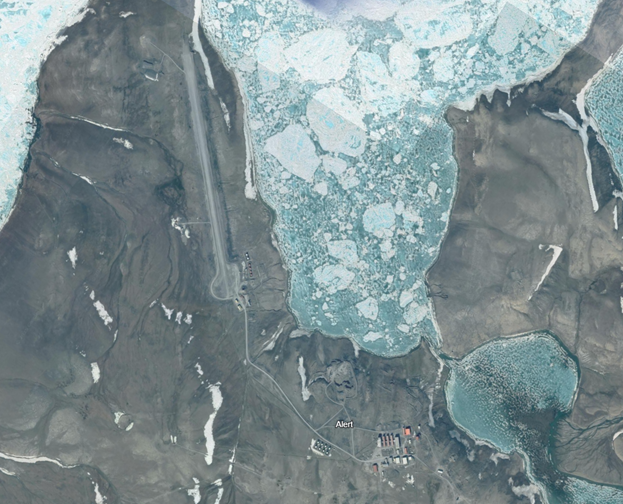
CFS Alert
(Existing, Needs Expansion)
Established in 1950, CFS Alert is the northernmost permanently inhabited site in the world and serves as a critical SIGINT and weather monitoring station. As part of NORAD and the Five Eyes intelligence network, it provides early warning and Arctic surveillance. The station hosts a small detachment of CAF personnel and civilian contractors, operating radar, communications systems, and an airstrip for resupply.
Despite its strategic location, Alert faces severe logistical challenges due to extreme isolation, aging infrastructure, and limited defensive capabilities. It is incapable of supporting rapid-response operations, reducing its effectiveness beyond intelligence gathering. To address these weaknesses, CFS Alert requires modernized radar and SIGINT systems, expanded UAV and satellite surveillance, an upgraded airstrip, and a small security force for sovereignty enforcement and emergency response.
There is no permanent civilian settlement near CFS Alert; all personnel serve on rotational deployments of three to six months.
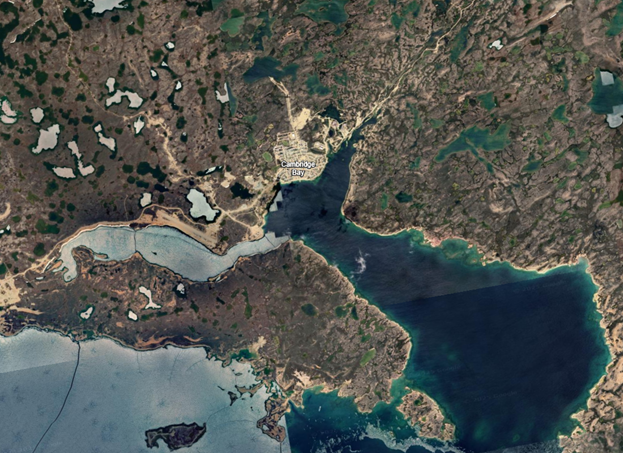
CFS Cambridge Bay
(New, Proposed)
Located along the Northwest Passage, Cambridge Bay is a strategic site for maritime surveillance and Arctic sovereignty enforcement. Historically, it hosted an RCMP station and weather monitoring site, but today it has no military infrastructure beyond a small civilian airstrip and refueling station. Establishing CFS Cambridge Bay would allow Canada to monitor foreign naval activity, improve Arctic domain awareness, and secure one of the most navigable Arctic shipping routes.
Currently, the site suffers from a lack of military presence, no real-time surveillance capabilities, and underdeveloped logistics facilities. To function as an effective Arctic station, it would require a radar and surveillance station, a permanent rotational CAF detachment, a small naval dock for Arctic patrol vessels and icebreakers, and an expanded airstrip capable of supporting CAF aircraft and UAV operations.
Cambridge Bay has a civilian population of 1,760 (2021 Census), making it one of the largest Arctic settlements. Extending an all-season highway from Yellowknife would improve accessibility, unlocking Nunavut’s Kitikmeot region for mining operations, particularly gold, uranium, and rare earth metals. A deepwater port expansion would establish Cambridge Bay as a key Arctic shipping hub, offering logistics and refueling for vessels transiting the Northwest Passage. Additionally, green energy projects such as wind and solar farms could reduce reliance on diesel, lowering costs for military and industrial operations while making year-round economic activity more viable.
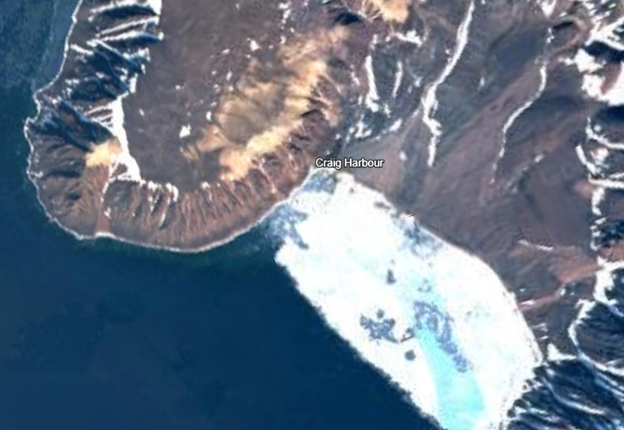
CFS Craig Harbour
(Reactivate/Rebuild, Proposed)
CFS Craig Harbour, originally an RCMP outpost established in the 1920s, was designed to assert Canadian sovereignty and monitor Arctic activity near Greenland. However, harsh conditions and logistical challenges led to its abandonment. Today, only ruins remain, and there is no military or civilian presence. Despite its isolation, Craig Harbour’s proximity to Greenland and major Arctic shipping lanes makes it an ideal site for a forward naval observation post and surveillance station.
Its primary limitations are extreme remoteness, lack of infrastructure, and year-round resupply difficulties. However, a reactivated CFS Craig Harbour could support naval surveillance radar, SIGINT operations, and a small refueling and resupply depot for Arctic patrol vessels. Establishing an unmanned drone and satellite monitoring station would provide persistent surveillance over the eastern Arctic, enhancing domain awareness and early warning capabilities.
While Craig Harbour lacks industrial potential, its military value is undeniable. Investing in radar, SIGINT, and automated surveillance systems would reinforce Canada’s Arctic sovereignty and deter foreign encroachment. A small naval resupply station would enhance coast guard and naval patrols, ensuring a continuous Canadian presence in this geopolitically sensitive region.
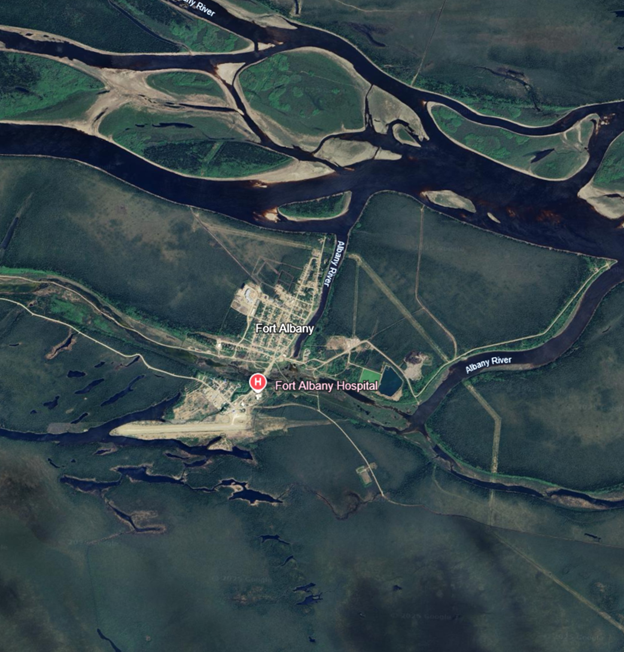
CFS Fort Albany
(New, Proposed – Strategic Gateway to the Ring of Fire)
Originally established as a Hudson’s Bay Company trading post in 1683, Fort Albany has long been a logistical and communications hub in northern Ontario. During the Cold War, it was part of the Mid-Canada Line, a radar network designed to detect Soviet bombers, but its radar infrastructure was decommissioned in 1965. Today, Fort Albany lacks any active radar systems and has only a small airstrip, with 30 personnel from the 3rd Canadian Ranger Patrol Group representing its only military presence. Despite these limitations, its relatively accessible location makes it an ideal candidate for expansion into a logistics, surveillance, and operational hub supporting Arctic defence. To fulfill this role, Fort Albany requires a modernized radar system, permanent CAF personnel for 24/7 monitoring, an expanded airstrip for military aircraft, and upgraded communications systems to serve as a primary Arctic relay station. The 2021 Census recorded a population of 1,250 residents, providing a potential local workforce for future development.
Expanding CFS Fort Albany presents a strategic opportunity to unlock Ontario’s Ring of Fire, a region containing one of the world’s richest deposits of nickel, chromite, and rare earth metals—critical for advanced manufacturing, defence, and clean energy technologies. A new all-season highway and railway extension from southern Ontario would finally provide access to these mineral deposits, enabling large-scale mining operations. Extending electrical and natural gas infrastructure would eliminate reliance on costly diesel generators, making resource extraction and industrial development financially viable. Improved port facilities on James Bay would further streamline mineral exports, allowing direct shipment to global markets while reducing dependency on southern supply chains.
Beyond economic benefits, this expansion would strengthen Indigenous employment and economic participation, integrating local communities into mining, logistics, and infrastructure maintenance. Fort Albany’s transformation into a military and industrial hub would enhance Canada’s Arctic and northern security, ensure strategic access to critical minerals, and position Canada as a leader in the next global resource boom.
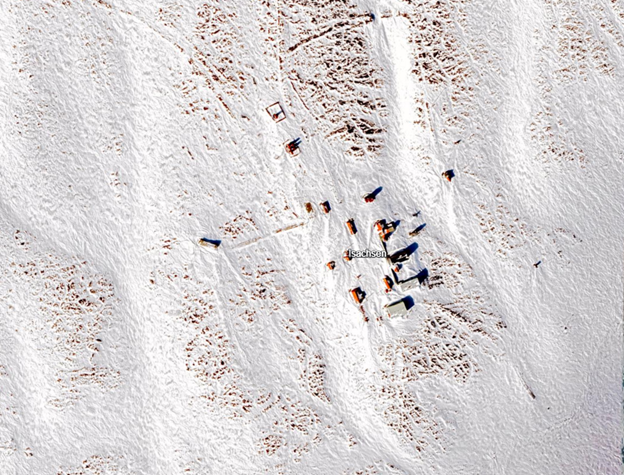
CFS Isachsen
(New, Proposed – Remote Arctic Surveillance & Research Outpost)
CFS Isachsen, located on Ellef Ringnes Island, is one of the most isolated locations in the Arctic. Originally established in 1948 as a weather monitoring station, it was abandoned in the 1970s, though remnants of the facility still exist. Its strategic value lies in its central position within the Arctic Archipelago, making it an ideal site for early warning radar, satellite communications, and signals intelligence (SIGINT). However, its extreme remoteness, harsh climate, and total lack of infrastructure make it one of the most challenging locations for sustained operations. Currently, there is no military presence, no functional logistics chain, and no established surveillance infrastructure. To function as a military asset, CFS Isachsen would require an advanced radar and electronic warfare station, an upgraded airstrip for seasonal resupply, and a small but dedicated security detachment for operations and emergency response. There is no associated civilian settlement on Ellef Ringnes Island.
While CFS Isachsen is not suited for large-scale transportation or economic development, its geographic isolation makes it uniquely valuable for both military and scientific applications. The site could serve as a secure Arctic SIGINT and electronic warfare station, similar to U.S. installations in Alaska and Greenland, providing uninterrupted surveillance of Arctic air and maritime activity. Additionally, Isachsen’s location, free from local interference, makes it ideal for automated drone surveillance, satellite tracking, and climate research, allowing Canada to monitor vast portions of the Arctic with minimal personnel requirements.
Expanding logistics capabilities at Isachsen could also provide limited but critical support for Arctic aviation, offering a fuel cache and emergency landing site for long-range patrols and search and rescue (SAR) missions. Its scientific potential is significant—the isolation, extreme cold, and minimal human activity create an ideal environment for climate monitoring, atmospheric research, and polar weather studies. This could attract international collaboration with research institutions, enhancing Canada’s role in global climate science. While there is little justification for heavy civilian investment, CFS Isachsen could still play a pivotal role in Arctic sovereignty, intelligence gathering, and high-value scientific research.
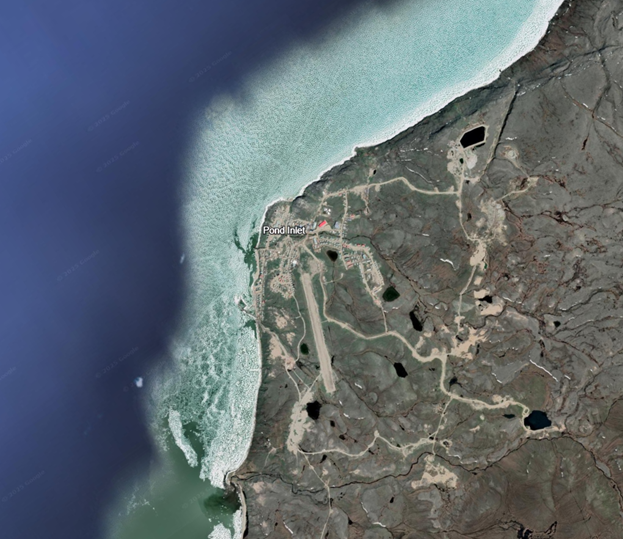
CFS Pond Inlet
(New, Proposed – Eastern Arctic Naval & Resource Hub)
CFS Pond Inlet is a strategically vital location near the eastern entrance to the Northwest Passage, making it an ideal naval observation and sovereignty enforcement hub. Historically, it was a Hudson’s Bay Company trading post and later an RCMP detachment, reinforcing Canada’s presence in the region. Today, it has no dedicated military infrastructure, though a small airstrip and civilian port exist. Its primary limitations include the absence of permanent CAF personnel, no advanced radar or surveillance systems, and a lack of refueling or logistics support. However, its proximity to Arctic shipping routes and potential foreign naval activity makes it a critical candidate for expansion. To function effectively, CFS Pond Inlet would require a naval surveillance radar station, a small dock for Arctic patrol ships, a permanent CAF detachment, and an expanded airstrip capable of supporting military aircraft and UAVs. As of the 2021 Census, Pond Inlet had a population of 1,555 residents, providing a potential workforce for supporting infrastructure development.
Beyond its military importance, Pond Inlet sits near significant mineral deposits, including the Mary River iron ore mine, one of the world’s richest iron reserves, located 160 kilometres south of the community. Mining operations in the region already rely on Milne Inlet for ore shipments, but improved infrastructure—including a deepwater port at Pond Inlet—would allow for greater efficiency in resource extraction and export. Establishing a year-round road linking Pond Inlet to other Baffin Island communities would reduce reliance on seasonal ice roads and costly air transport, facilitating industrial expansion and economic growth.
The installation of advanced radar and surveillance systems would improve both military and civilian navigation, ensuring safer Arctic operations and stronger sovereignty enforcement. Additionally, Pond Inlet’s unique environment and wildlife create opportunities for Arctic research, environmental monitoring, and controlled ecotourism, balancing economic development with ecological protection. Military investment in the region would enhance emergency response capabilities, support search and rescue (SAR) operations, and provide environmental oversight for industrial projects.
With its combination of military necessity, resource wealth, and strategic location, CFS Pond Inlet would reinforce Canada’s Arctic sovereignty while unlocking long-term economic benefits.
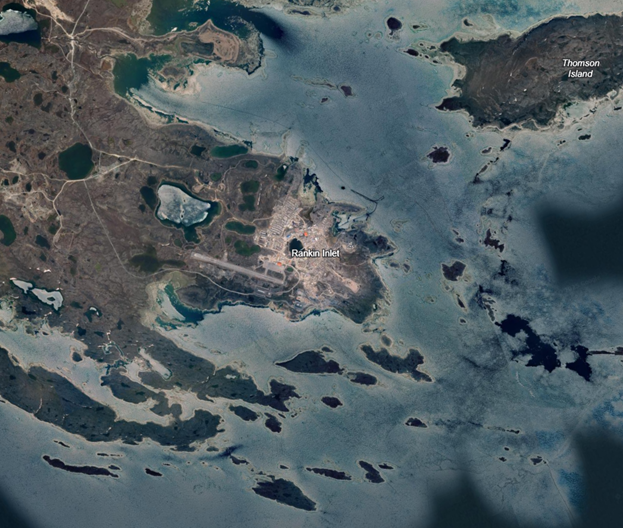
CFS Rankin Inlet
(New, Proposed – Arctic Surveillance & Logistics Hub)
CFS Rankin Inlet is a proposed electronic warfare, communications relay, and radar tracking station located in central Nunavut on the northwestern coast of Hudson Bay. Historically, the area has been a hub for Arctic exploration, mining, and Inuit settlement, and today, it serves as one of the largest and most accessible communities in the Arctic. Its strategic position in the eastern Arctic makes it an ideal location for air and maritime surveillance, particularly for monitoring Hudson Bay, Arctic shipping routes, and airborne activity approaching Canada from the north.
Currently, Rankin Inlet has no dedicated CAF infrastructure, though it hosts an airport, a civilian port, and government facilities that could be adapted for military use. The site’s main limitations include the lack of a permanent military presence, no dedicated radar or surveillance systems, and insufficient logistical support for sustained CAF operations. However, its established infrastructure, ease of access compared to more remote CFS sites, and central Arctic location make it a prime candidate for rapid military expansion. To function effectively, CFS Rankin Inlet would require a dedicated radar installation for airspace and maritime monitoring, a communications relay hub linking Arctic stations, a UAV launch site for Arctic reconnaissance, and a small CAF detachment for continuous operations. As of the 2021 Census, Rankin Inlet had a population of 2,975 residents, providing a strong local workforce to support development.
Beyond its military significance, Rankin Inlet is one of the most economically viable Arctic locations for infrastructure expansion. A railway extension from Churchill, Manitoba, to Rankin Inlet would open up new supply routes for both military logistics and economic activity, significantly reducing reliance on costly air transport. Expanding deepwater port facilities would establish Rankin Inlet as a key Arctic shipping and refueling hub, supporting both naval operations and commercial trade.
Improved transportation and energy infrastructure would also facilitate expanded mining operations, particularly for gold, nickel, and other mineral resources found in the surrounding region. Investment in renewable energy projects, such as hydroelectric and LNG power, could further reduce Nunavut’s dependence on diesel, making large-scale industrial activity more viable. A stronger logistics and supply chain would also benefit Indigenous-owned businesses, fostering economic growth while reinforcing Canada’s Arctic sovereignty.
CFS Rankin Inlet’s existing infrastructure, transportation links, and resource potential position it as both a key Arctic defence site and a driver of economic expansion. Developing it into a full-scale Arctic surveillance and logistics hub would enhance Canada’s ability to monitor its northern air and sea approaches while also fueling long-term economic growth through mining, energy, and transportation investments. A rail connection to Churchill would significantly lower the cost of Arctic supply operations, making Rankin Inlet a strategic asset for both military and civilian development.
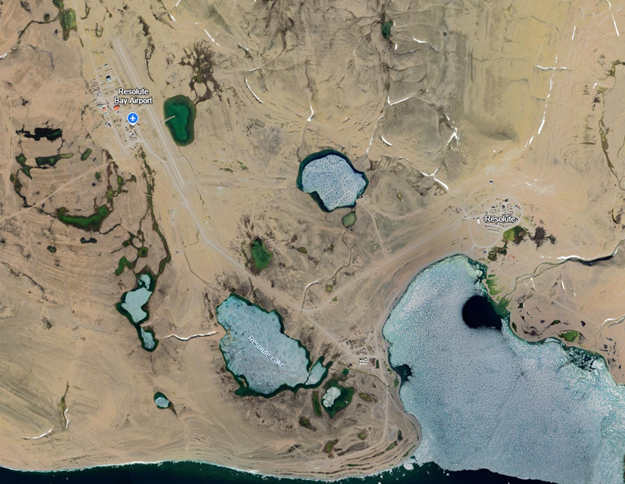
CFS Resolute Bay
(Existing, Needs Modernization and Expansion – Arctic Logistics & Training Hub)
CFS Resolute Bay has long been a critical Arctic logistics and training centre for the Canadian Armed Forces (CAF). Located on Cornwallis Island in Nunavut, it is home to one of Canada’s northernmost airstrips capable of supporting large aircraft, making it a key transit hub for Arctic operations. Originally an RCMP outpost, it was later adapted for military use and now supports air mobility operations, Arctic survival training, and resupply missions. The Canadian Forces Arctic Training Centre (CAFATC) is based here, running Arctic training exercises, including the Northern Exercise (NOREX), which last occurred in 2018 and may have been absorbed into Operation NANOOK.
Despite its strategic location within the Arctic Archipelago, CFS Resolute Bay functions primarily as a staging area rather than a permanent military installation, meaning it lacks defensive infrastructure, large-scale supply depots, and continuous surveillance capabilities. It also supports operations at Nanisivik Naval Facility, a deepwater refueling station for Arctic patrol ships, though Nanisivik has faced severe delays and is only expected to become fully operational this year—over a decade behind schedule. To strengthen CFS Resolute Bay’s role as Canada’s primary Arctic logistics, air mobility, and training hub, the site requires a permanent military detachment, expanded airstrip and fuel storage capacity, advanced Arctic radar systems, and a supply depot for sustained operations. As of the 2021 Census, Resolute Bay had a population of 198 residents.
Beyond its military importance, an expanded CFS Resolute Bay would provide economic and strategic benefits. Improving logistics and resupply operations could lower the cost of essential goods for remote Arctic communities, enhancing food security and energy access in Nunavut. Increased scientific research facilities would attract investment in climate and environmental studies, reinforcing Canada’s role in global Arctic research efforts. Additionally, Resolute Bay could serve as a staging point for commercial Arctic shipping, providing icebreaker support and cargo transfer capabilities for vessels navigating the Northwest Passage.
Resolute Bay’s military and logistical importance cannot be overstated. Strengthening its air mobility, resupply, and training capabilities would enable year-round Arctic operations, reinforcing Canadian sovereignty in the High Arctic. Meanwhile, civilian investment in logistics, research, and commercial shipping infrastructure would bring long-term economic benefits, making Resolute Bay a critical gateway for both military and commercial Arctic expansion.
New Full-Sized, Regular, Military Bases to Anchor Arctic Defence
CFB Yellowknife
(New, Proposed – Arctic Army & Air Command Hub)

Establishing CFB Yellowknife as a permanent Army and Air Force base would create a critical command hub for Arctic defence and rapid response operations. As the largest city in the Northwest Territories and already home to Joint Task Force (North) headquarters, Yellowknife is a natural choice for military expansion. A full-scale base would solidify Canada’s military presence in the western Arctic, providing force projection, surveillance, and logistical support for operations across the region.
A permanent Army garrison would host a dedicated Arctic Brigade, trained for cold-weather warfare, search and rescue (SAR), and rapid deployment. This force would be responsible for securing strategic sites, responding to incursions, and assisting in emergency operations across the North. Meanwhile, a modernized Air Force installation would expand surveillance and air mobility, hosting long-range patrol aircraft, UAV operations, and refueling capabilities. This would allow quicker response times to Arctic threats and strengthen Canada’s ability to monitor airspace and maritime activity over the Northwest Passage.
Strategic Connectivity & Defence Role
CFB Yellowknife would serve as the primary Army and Air logistics hub for Canada’s western Arctic. It would directly support CFS Cambridge Bay, CFS Resolute Bay, and CFS Rankin Inlet, acting as a staging point for northern deployments. It would also coordinate with CFB Tuktoyaktuk, ensuring naval and ground forces are integrated across Arctic operations.
A highway extension from Yellowknife to Cambridge Bay would establish a direct land corridor to the Arctic, enabling rapid military deployments and resource development in Nunavut’s Kitikmeot region. Additionally, expanding Yellowknife’s airfield and fuel reserves would improve Canada’s ability to support long-range Arctic patrols, drone surveillance, and rapid airlift operations.
Economic & Civilian Benefits
A permanent base would generate thousands of direct and indirect jobs, boosting construction, transportation, and service industries in the Northwest Territories. The creation of a Yellowknife-Arctic highway would unlock vast mineral deposits, supporting gold, uranium, and rare earth metal extraction. Military investment in housing, utilities, and infrastructure would also improve local living conditions and reduce costs for northern businesses and residents.
CFB Yellowknife would also enhance scientific and environmental research, providing logistical support for Arctic climate studies, renewable energy development, and wildlife monitoring. The presence of a year-round military and civilian transport corridor would further incentivize private sector investment, making the western Arctic more economically viable.
Summary
CFB Yellowknife would serve as the western command hub for Arctic military operations, linking Canada’s Army and Air Force with northern surveillance stations and forward bases. It would also drive long-term economic expansion, integrating defence infrastructure with resource development, logistics, and Arctic research.
CFB Churchill
(New, Proposed – Arctic Naval & Army Forward Base)

Churchill, Manitoba, is Canada’s only deepwater Arctic port with rail access, making it an ideal location for a permanent Navy and Army base. Establishing CFB Churchill would restore the town as Canada’s premier Arctic gateway, allowing year-round military and commercial access to the North. A full-scale naval installation would serve as a home port for Arctic patrol vessels, icebreakers, and submarines, while an Army garrison specializing in cold-weather operations would provide rapid deployment capabilities across the Arctic.
Military Role & Strategic Connectivity
CFB Churchill would serve as the primary naval base for Arctic fleet operations, directly supporting CFS Rankin Inlet, CFS Fort Albany, and CFS Cambridge Bay. It would provide refueling, repairs, and resupply for Arctic patrol ships and submarines, securing Hudson Bay and Arctic shipping routes. The base would also coordinate with CFB Yellowknife (Army & Air) and CFB Tuktoyaktuk (Naval Operations Hub) to create a continuous Arctic defence network.
A dedicated Army presence would include a cold-weather warfare battalion capable of deploying forces rapidly to Arctic hotspots. This unit would train for high-latitude combat, search and rescue (SAR), and emergency response operations, ensuring Canada can respond quickly to northern security threats.
Infrastructure & Logistics Expansion – If HBC Could Do It, So Can We
One of the biggest criticisms of establishing a permanent base at Churchill is the lack of robust highway and rail infrastructure. However, if the Hudson’s Bay Company could establish Churchill as a vital Arctic trading post in 1717, surely Canada can do it again in 2025.
The current rail line is singular and unreliable, and while a seasonal road exists, it is inadequate for sustained military and economic operations. A modernized Arctic logistics corridor—featuring a dual-track railway and an all-season highway—would permanently connect Churchill to southern Canada, enabling uninterrupted military deployments, resource exports, and civilian supply chains. Strengthening these connections is not just feasible—it is essential for securing Canada’s Arctic sovereignty and unlocking the full potential of our northern economy.
Energy Export Potential – Churchill as Canada’s Central LNG & Oil Outlet
Churchill also presents a massive opportunity for Canadian energy exports, bypassing traditional bottlenecks in the east. Given the political and regulatory roadblocks preventing oil and natural gas pipelines from reaching tidewater via Quebec, Churchill provides an alternative Arctic export route. A pipeline from Alberta to Churchill would allow Canada to export LNG and oil directly to global markets, avoiding the political challenges of eastern pipeline projects. With modernized port infrastructure, Churchill could become Canada’s central LNG hub, ensuring energy security and export growth while reducing dependence on foreign-controlled shipping routes.
Economic Benefits & Civilian Impact
Beyond defence, CFB Churchill’s revival as a logistics hub would have massive economic implications. A modernized Arctic port with military and commercial infrastructure would boost Canada’s northern supply chain, allowing faster, cheaper resupply to remote communities. Expanding Churchill’s rail connections would support mining exports from the Hudson Bay and Nunavut regions, finally unlocking the full potential of northern mineral deposits.
The Arctic shipping industry would also benefit, as CFB Churchill could act as a commercial transshipment point for vessels using the Northwest Passage. Military-driven investment in port infrastructure, roads, and fuel storage would make Churchill a key player in global Arctic trade, attracting private sector investment and international partnerships.
Summary
CFB Churchill would restore Canada’s Arctic naval presence, secure critical shipping routes, and provide a strategic Army deployment point for Arctic operations. Its economic impact would be transformational, making Churchill a central hub for Arctic logistics, trade, and resource development. The Hudson’s Bay Company established Churchill in 1717 without modern technology—there is no excuse for Canada to ignore its potential in 2025. Additionally, Churchill could provide a long-overdue central outlet for Canada’s oil and gas exports, ensuring energy security, economic growth, and independence from restrictive eastern pipeline politics.
CFB Iqaluit
(New, Proposed – Eastern Arctic Naval & Air Command Base)
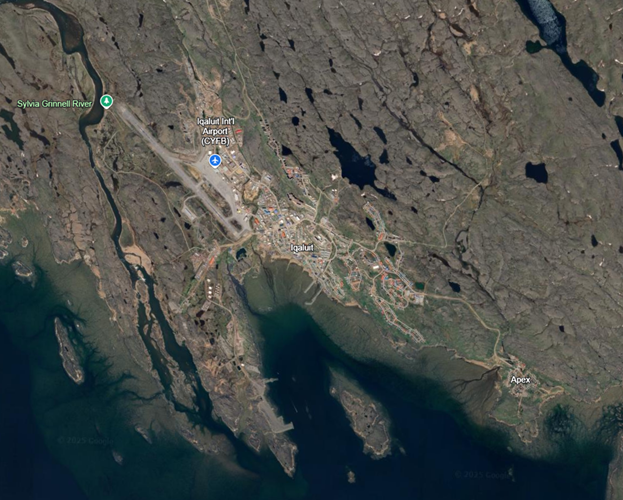
Iqaluit, the capital of Nunavut, is the largest and most strategically located settlement in the eastern Arctic, making it the ideal site for a permanent Navy and Air Force base. Establishing CFB Iqaluit would provide a forward operations hub for Arctic naval patrols, long-range air surveillance, and rapid response operations, securing Canada’s control over the eastern entrance to the Northwest Passage. Given Iqaluit’s existing infrastructure, deepwater access, and proximity to Arctic chokepoints, this base would be a key pillar of Canada’s Arctic defence strategy.
Military Role & Strategic Connectivity
CFB Iqaluit would serve as the primary naval base for Arctic fleet operations in the eastern Arctic, providing refueling, repairs, and logistics support for Arctic patrol ships, icebreakers, and submarines. The base would host a permanent naval detachment, ensuring continuous surveillance and sovereignty enforcement over Arctic waters.
On the Air Force side, an expanded Iqaluit airfield would accommodate long-range patrol aircraft, aerial refueling operations, and UAV surveillance, ensuring Canada can track and respond to foreign activity in the eastern Arctic. Given the increasing presence of Russian and Chinese vessels in Arctic waters, a permanent air and naval presence at Iqaluit is no longer optional—it is a necessity.
The base would directly support CFS Craig Harbour, CFS Pond Inlet, and CFS Alert, acting as the logistics and operational hub for the entire eastern Arctic defence network. Coordination with CFB Yellowknife (western Arctic command) and CFB Churchill (Hudson Bay operations) would establish a continuous Arctic military presence, ensuring year-round surveillance and rapid deployment capability.
Infrastructure & Logistics Expansion – Securing Canada’s Arctic Sovereignty
Iqaluit already hosts a deepwater port, a large airport, and government facilities, making it the most cost-effective location for a full-scale Arctic military base. However, to support full-time naval and air operations, CFB Iqaluit would require:
- Expanded port facilities for Arctic patrol vessels, icebreakers, and submarines.
- Upgraded airfield infrastructure to host long-range patrol aircraft, aerial refueling, and UAV surveillance operations.
- Enhanced radar and SIGINT installations for continuous Arctic monitoring.
- Permanent logistics and fuel storage facilities to sustain year-round operations.
Additionally, an all-season road network connecting Iqaluit to surrounding communities would further reduce reliance on costly air transport, improving both military and civilian supply chains.
Economic Benefits & Civilian Impact
The establishment of CFB Iqaluit would bring major economic benefits to Nunavut’s capital and surrounding regions. A permanent military presence would create thousands of direct and indirect jobs, boosting construction, transportation, and service industries in one of Canada’s most remote and economically vulnerable regions.
A modernized deepwater port would support commercial shipping, fishing, and Arctic resource development, allowing Nunavut to export goods more efficiently while reducing the cost of imported essentials for local communities. Investment in communications and transportation infrastructure would also improve internet access, energy efficiency, and supply chains, benefiting both military and civilian operations.
The presence of a permanent Arctic research and environmental monitoring hub would also attract international scientific partnerships, reinforcing Canada’s role in global Arctic climate research and maritime security studies.
Summary
CFB Iqaluit would anchor Canada’s eastern Arctic defence strategy, providing permanent naval and air power projection over the Northwest Passage. It would directly support CFS Craig Harbour, CFS Pond Inlet, and CFS Alert, ensuring continuous surveillance and military readiness. Beyond defence, the base would drive economic expansion, improve Arctic infrastructure, and position Iqaluit as a key Arctic trade and security hub.
With Russia and China expanding their Arctic presence, Canada must act now—a permanent military base in Iqaluit is essential to securing Arctic sovereignty, strengthening national defence, and unlocking long-term economic growth.
CFB Tuktoyaktuk
(New, Proposed – Arctic Naval & Logistics Hub)
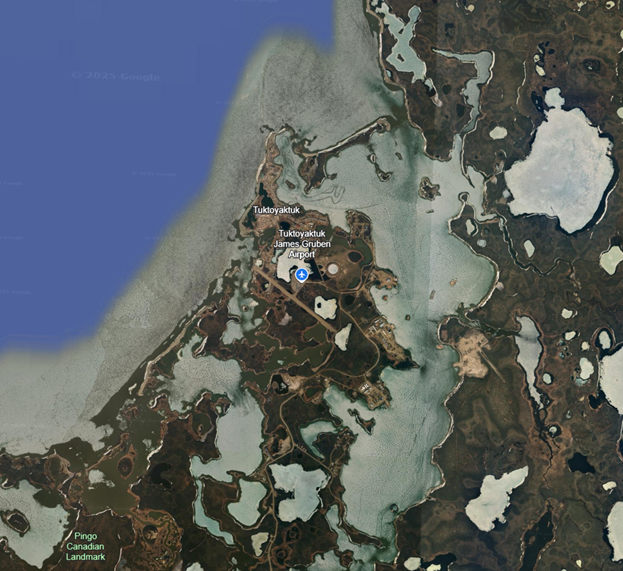
Tuktoyaktuk, affectionately known as "Tuk," is Canada's sole Arctic Ocean community accessible by road from the south, positioning it as an ideal location for a permanent Navy and logistics base. Establishing CFB Tuktoyaktuk would provide Canada with a dedicated naval facility for Arctic patrol ships, icebreakers, and future submarine operations, securing the western entrance to the Northwest Passage. It would also serve as a critical logistics hub for Arctic operations, supporting land, sea, and air deployments across the North.
Infrastructure & Logistics Expansion – Enhancing Arctic Accessibility
The current Inuvik-Tuktoyaktuk Highway (ITH), designated as Highway 10, is the first all-weather road connecting Canada's Arctic Coast. However, this 138-kilometer gravel highway has experienced challenges, including washouts that have led to temporary closures, highlighting its vulnerability and the need for significant upgrades.
In contrast, Russia's Trans-Siberian Highway, a network of federal highways spanning over 11,000 kilometres from St. Petersburg to Vladivostok, is predominantly paved and serves as a critical infrastructure backbone across Siberia.
This disparity underscores the necessity for Canada to invest in upgrading the ITH to a more robust, paved standard, ensuring reliable year-round access to Tuktoyaktuk.
Currently, there is no rail connection to Tuktoyaktuk. Establishing a rail link between Tuktoyaktuk and southern transportation networks would significantly enhance the movement of military personnel, equipment, and supplies, while also benefiting civilian logistics and economic activities in the region.
Economic Benefits & Civilian Impact
Beyond its military significance, CFB Tuktoyaktuk would drive long-term economic growth in the western Arctic. Expanding Tuk's port infrastructure would allow it to serve as a commercial shipping hub for Arctic energy exports, enabling faster transport of oil and LNG from northern Canada to global markets. With Churchill as a central LNG hub and Tuk as a western Arctic export point, Canada could establish a dual-port energy strategy, reducing reliance on foreign-controlled trade routes.
Improving road and port infrastructure would also lower costs for civilian supply chains, reducing the price of food, fuel, and essential goods for remote Arctic communities. For instance, residents in Inuvik have faced exorbitant grocery prices, with items like chicken breasts reaching $47, primarily due to challenging logistics and limited transportation options.
Additionally, military investment in communications, transportation, and renewable energy infrastructure would provide lasting benefits to Indigenous communities and northern businesses.
Summary
CFB Tuktoyaktuk would anchor Canada's western Arctic naval presence, securing critical Arctic shipping routes, expanding military logistics, and strengthening Arctic sovereignty. The base would directly support CFB Yellowknife and CFS Cambridge Bay, ensuring continuous naval patrols and logistics operations across the Northwest Passage.
Beyond defence, the base would transform Tuk into an economic hub, supporting energy exports, commercial shipping, and infrastructure development in the western Arctic. With Tuk as a naval and logistics base, Churchill as an Arctic trade and energy hub, and Yellowknife as an Army and Air command centre, Canada would have a comprehensive Arctic defence and economic strategy.
The Arctic is no longer a remote frontier—it is Canada's front line. CFB Tuk ensures we control it.
Conclusion: Commanding the Arctic—Our Duty, Our Opportunity
The Arctic is not a distant afterthought—it is Canada’s frontier, our inheritance, and our responsibility. It is a region that has shaped legends, tested the resolve of explorers, and now, in the 21st century, has become one of the most strategically and economically significant territories on Earth. While foreign powers expand their military presence and lay claim to Arctic trade routes and resources, Canada cannot afford to remain passive. We must act with the same boldness that defined those who first ventured into the ice and secured this land.
A network of permanent CAF bases and revitalized Arctic stations will ensure continuous domain awareness, rapid deployment capabilities, and year-round sovereignty enforcement. These investments will not only fortify our northern defences but will also lay the foundation for economic transformation—paving roads, extending rail lines, and unlocking untapped mineral wealth, energy resources, and Arctic shipping lanes. This is not just about military strength; it is about nation-building on a grand scale.
The Arctic’s challenges are immense—but so too is the opportunity. The same blood that once braved these frozen waters now has the responsibility to defend them. The land so brutally won must not be left unguarded. Canada does not fear the cold; we thrive in it. We command it. And if we are to keep our True North strong and free, we must be willing to fight for it—not in some distant future, but now.
